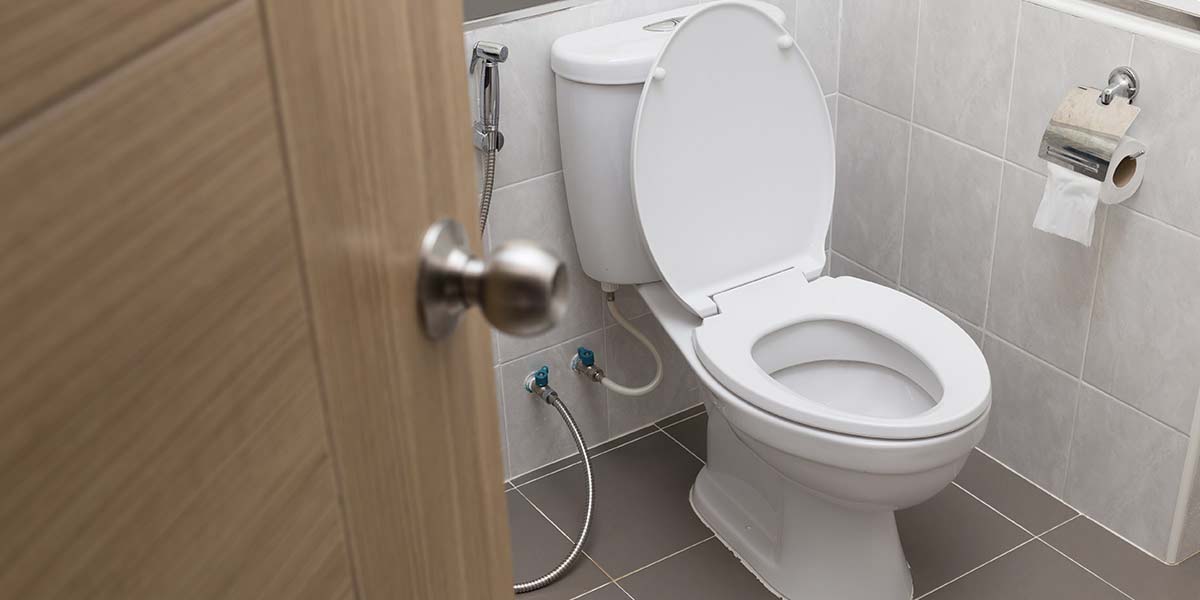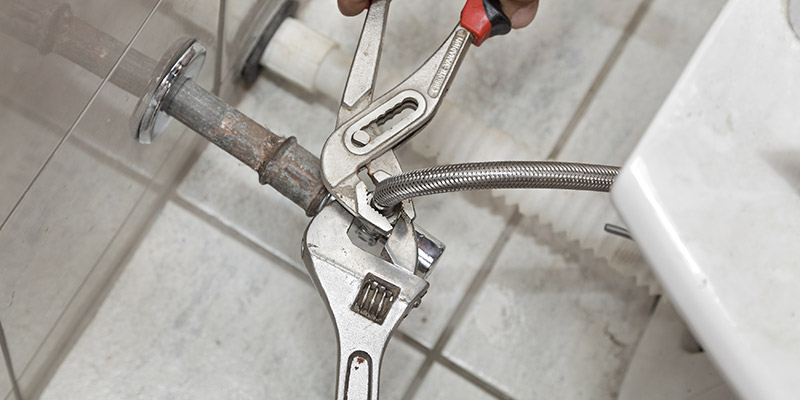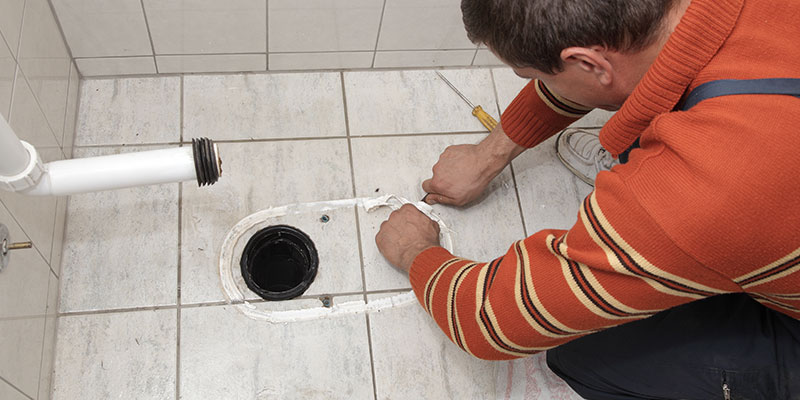
There’s a good chance that at some point in your life you’ll ask yourself, ‘Can I remove a toilet myself? And what do I do with it once it’s not attached to the floor?’ Whether it’s part of a full bathroom remodel or because your old one isn’t flushing like it used to, toilet replacement is an inevitable part of home ownership. We asked the experts at Toilet Reviewer to get the scoop on everything you need to know about replacing and disposing of your toilet.
While toilets are intended to last for decades, they will eventually need replacing. According to Gus Castro, Editor and Content Manager of Toilet Reviewer, there are a variety of reasons a toilet should be replaced.
“Issues can be related to the toilet being too old, wobbly, broken parts and inefficient flushing,” Castro said. “If your water bill is too high and you have a large family, chances are you might want to get a water-saving toilet.”
Whatever the reason, use these seven steps to guide you as you remove your toilet the DIY way.
The last thing you want to do is scramble for what you need while you’re in the middle of removing a toilet. Here are the tools and supplies you’ll need to get the job done, as recommended by Castro.
|
|
|
|---|---|
|
|
Before you get to using the tools, locate the water shutoff valve and turn it off. The valve is often below the toilet’s tank going into the floor, but can sometimes be mounted to the wall behind the bowl.
Once the water is turned off, you have to drain the toilet. This step can get a bit messy, so be sure to cover the floor where you are working with spare rags or junk towels.
Pro-Tip: If you’re doing additional work such as removing a vanity or replacing a bathtub, consider shutting off the water to the whole room or house instead.
Getting the toilet tank out of the way is a simple process, but you have to detach it from the water pipes, first. To do this, disconnect the inlet supply line — a threaded pipe — from both the toilet tank and the shutoff valve using a wrench and pliers.
One that is done, you’re set to work on the tank
Pro-Tip: If your toilet model is a one-piece unit, all you have to do at this time is disconnect the toilet tank from the water supply.
There is a floor bolt on each side of the toilet. They may be covered with a cap. Take the cap off, then use a wrench to remove the nuts from the bolts. Use the oil here as well if needed.
Pro-Tip: If the nuts still refuse to move after using penetrating oil, you may need to use your hacksaw to cut the bolts off below the nut.
Use a putty knife to cut through the caulk or wax seal that connects the base of the toilet to the floor. Once you have a solid start, straddle the toilet and gently rock it from side to side to break the rest of the seal.
Once the seal has been completely broken, carefully lift the toilet bowl above the floor bolts and remove it from the room.

“Older, traditional toilets are quite heavy — around 88 pounds for a one-piece toilet — and will require a partner to assist you with the removal process. The other hard part is making sure you don’t damage the area around your toilet. Carefully remove the toilet and take your time to avoid injury.”
Gus Castro | Editor & Content Manager, Toilet Reviewer
According to Castro, as a rule of thumb you should replace your toilet flange if you’re replacing your toilet. You may need to use a putty knife and rag to clean off a layer of wax on top of your flange before you can access the screws. Once the screws are visible, simply unscrew them and the flange will lift out, leaving a hole in your floor. If the flange is old or broken, Castro advised that you may need to do some extra work. “If there are pieces of the old flange left behind [when you lift it off], you may need to chisel them out,” Castro said.
Pro-Tip: If you are not doing a flooring project in conjunction with the toilet removal, take some time to use your putty and utility knives to scrape any remaining caulk off the floor from where the toilet bowl seal was broken.
If you’re removing the toilet as part of a larger bathroom project, be sure to stuff some rags in the drain hole to keep sewer gas from seeping into the bathroom. Also consider flipping your bucket upside down over the hole until your bathroom demo is at a point where you need access to the drain hole again.
There are four main options to get rid of your toilet: curbside collection, recycling, donation and renting a dumpster. Each comes with its own pros and cons as well as potential disposal fees and restrictions. Whichever option you choose, it’s best to call ahead to make sure you know all of the details needed to properly throw away your toilet.
Most cities will collect your toilet with your curbside trash. Follow bulk waste disposal guidelines to get rid of your toilet, and check with your local trash collection agency so that you take your toilet to the curb on the correct week.
Also, keep in mind that if you want to put your toilet in the garbage, there may be restrictions on how it has to be taken apart. Common requirements are that the seat and tank covers must be removed, any fasteners must be taken out and there can be no water in the bowl or tank.
While not an option in all cities, some areas that have a more robust recycling program will accept porcelain. Check with your local solid waste provider to see if there is a program available to you. Keep in mind that, even if there are no porcelain recycling programs available to you, there are parts of your toilet that can still be recycled. Things like fasteners, the toilet seat and flushing mechanisms in the tank may be recyclable.
It may not be the first option that comes to mind, but you can always donate your toilet to a local charity. There are a lot of nonprofits that will accept donated items and, while it may not be the most often donated item, plenty that accept salvaged building materials will consider accepting a toilet. Remember, though, that the toilet must be in good condition and that the organization has the right to deny acceptance of your toilet for any reason. It’s best to call ahead and ensure they are in need of your toilet before you just take it there.
If the toilet removal is part of a bigger project that will produce a lot of remodeling debris, renting a dumpster is probably your best overall disposal option. From a smaller 10 yard container for a bathroom remodel to a larger 30 yard bin for a full master-suite renovation, toilets, vanities and old dressers can all fit in a roll off dumpster without the hassle of waiting for a bulky collection day or taking your items to the landfill. Keep in mind, if all you are doing is removing a single toilet, this may not be the most practical solution.
The price range to have a toilet professionally removed is $46-$94. That price includes any disposal fees that a professional would charge, and keep in mind that the range can adjust based on your location, difficulty of the removal and weight of the toilet.
Any toilet disposal fees you may come across depend entirely upon your chosen disposal method.
With your toilet removed, it’s on to the next step in your bathroom. Whether that is replacing the toilet with a new one and calling it a day or an even more in-depth bathroom revamp, getting one item checked off the list means you’re moving in the right direction towards having the bathroom you want.
Remodeling your bathroom, but worried about the price tag? Read up on our tips for a budget bathroom remodel. Just need more room? We’ve got a guide that gives you all the tips and tricks you need to find space in a tiny bathroom.


